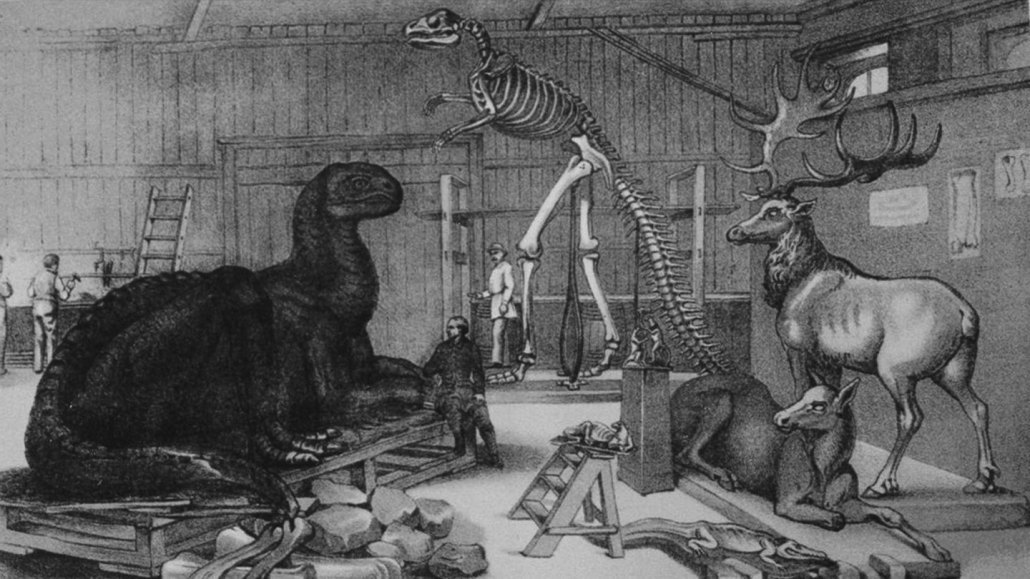The real culprit in a 19th century dinosaur whodunit is finally revealed
Creationism wasn’t to blame for the destruction of Central Park’s dinos

Before being destroyed, the Central Park workshop of artist Benjamin Waterhouse Hawkins included statues of extinct animals from North America and a reconstructed dinosaur skeleton.
SCIENCE HISTORY IMAGES/ALAMY STOCK PHOTO
A sledgehammer dealt the final blow to New York City’s dream of a paleontology museum.